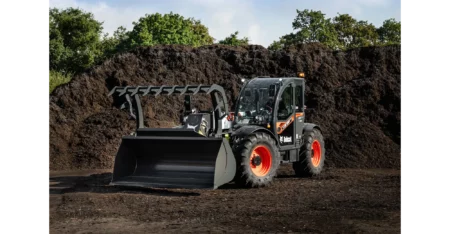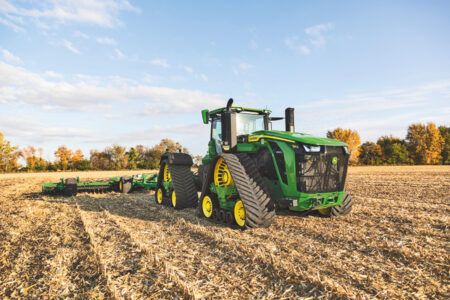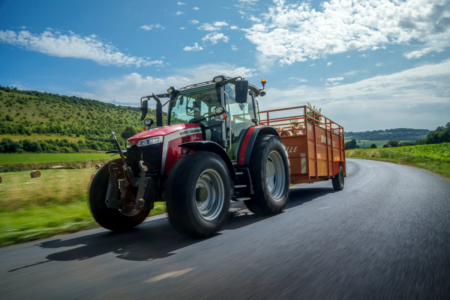With the development of the Highway Giant dual lane trailer, Scheuerle has raised dual-lane technology to a completely new level.
A special feature on the recently unveiled Highway Giant is the integrated folding mechanism which allows the complete trailer to be transported in a folded state on low-level platform semi-trailers (flat-bed trailers) with road use authorization. Thus, inexpensive approval-free empty runs can be carried out resulting in huge cost-savings.
Due to its low tare weight said to be the lowest on the market the Highway Giant dual lane trailer has been approved for use in most states in the USA, and was specially developed as a flexible vehicle concept in order to fulfil the wide range of requirements found in the North American market.
The design not only accommodates the variable vehicle widths (4.8m, 5.4m, 6m), but there is also the possibility to safely widen the vehicle under load. Adapting to meet the different regulations in the states to be crossed can therefore be easily and economically made with just one vehicle. Thanks to the folding technology, the trailer can also be inexpensively transported over long distances when folded up, regardless whether it is delivery to or returning from a transport assignment.
In order to achieve an optimum payload-tare weight ratio, the chassis is manufactured using a stable lightweight construction. As a connection to the towing vehicle, a gooseneck or drawbar can be used whilst equipment such as spacers or deck can easily be fitted.
The centrepiece of the Highway Giant features Scheuerle’s proven pendulum axle technology. The hydraulic cylinders in the pendulum axles have the largest displacement volume in the market, facilitating the driving under and picking up of loads. The pendulum axle mounting guarantees, in connection with the precise and smoothly-operating steering system, easy manoeuvring even when negotiating tight bends.
On request, the Highway Giant is available as a PowerBooster (PB); with this version, an additional aggregate provides extra thrust when driving and allow it to used as a self-propelled vehicle, without the need for a tractor. Thus, under certain circumstances, a second tractor is not required during the transport assignment and the cargo can be shunted into position at the final destination even in confined spaces.
June 12, 2015




